Pronouns @ WeWork
WeWork’s Office of Inclusion is proud to launch its Pronouns @ WeWork campaign, which seeks to foster an environment that allows each of us to thrive by inviting everyone to fully participate as their authentic self.

What are pronouns?
A personal pronoun is a simple substitute for the proper name of a person. Whether we realise it or not, pronouns have gender-implied association.
Gender identity is one’s innermost concept of self as male, female, a blend of both, or neither—how individuals perceive themselves and what they call themselves. It is just one piece of someone’s gender expression, the way in which a person expresses their gender identity, typically through their appearance, dress and behaviour. Because gender identity and gender expression may not always be the same as what you perceive, it is important to never assume a person’s pronouns.
Pronoun use cases
This list of pronouns is by no means comprehensive but is a helpful starting point:
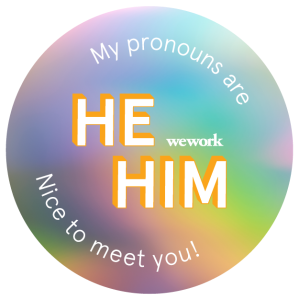
He/him/his
(pronounced: hee, him, his)
masculine identifying pronouns
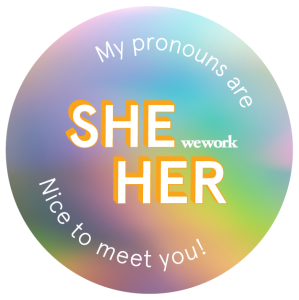
She/her/
hers
(pronounced: shee, hur, hurs)
feminine identifying pronouns
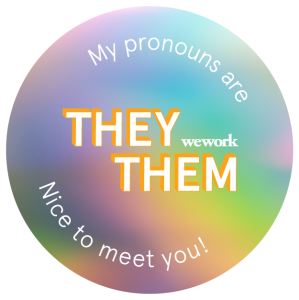
They/them/theirs
(pronounced: they, them, thairs)
gender-neutral pronouns
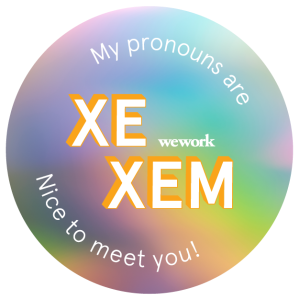
Xe/xem/xyrs
(pronounced: zee, zem, zeers)
gender-neutral pronouns
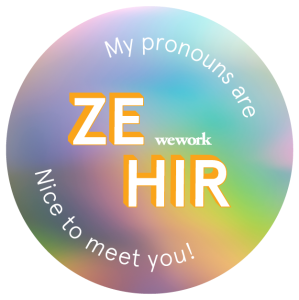
Ze/hir/hirs
(pronounced: zee, heer, heers)
gender-neutral pronouns
What are gender-neutral pronouns?
A gender-neutral or gender-inclusive pronoun is one that does not associate a gender with the individual who is being discussed. Most people who use gender-neutral pronouns use they/them/their pronouns. Those who use xe/xem/xyrs or ze/hir/hirs pronouns will often explicitly request these pronouns be used over they/them/theirs pronouns.
It’s important to never assume someone’s pronouns. Some people may prefer to identify by their names, and a gender-fluid individual’s pronouns may change based on how they’re presenting on any given day. If you do not know someone’s personal pronouns, use gender-neutral pronouns like ‘they/them/theirs’, or ask the person what pronouns they use.

What WeWork is doing to help everyone identify
From June 2021, WeWork is proud to offer vinyl pronoun stickers for laptops so that both our members and our employees can easily self-identify in our spaces. These stickers are now available at your Community Bar and are free to all members and employees in the US, Canada, the UK, Ireland, Australia, Germany, and Japan.
Other ways you can self-identify or use pronouns in the workplace:
Verbally
Introduce yourself with your pronouns:
‘Hello, I am John. My pronouns are he/him/his.’
This can be done in:
- Meetings
- Phone calls
- Daily face-to-face interactions
- And anytime you interact with others
Encourage others to do so as well
Written
The following are also ways in which you can identify your pronouns:
- Slack profile or IM profile
- Social media profiles
- Business cards
- Your email signature
Encourage others to do so as well

How can you be an ally?
Everyone wants to be able to bring their whole self to work. These five tips will help you support your gender-non-confirming co-workers and friends.
FAQs
Questions or concerns?
For more information on Inclusion & Diversity at WeWork, please visit the official Inclusion & Diversity page.